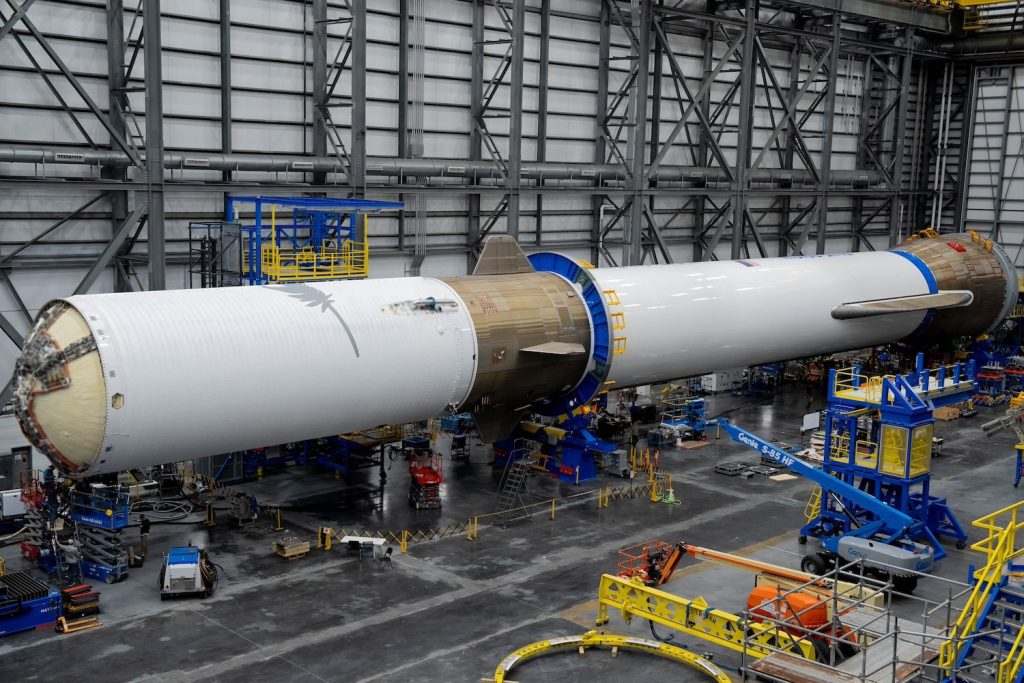Blue Origin is gearing up for the inaugural flight of its highly-anticipated New Glenn rocket, which is expected to launch later this month.
The company recently shared a photo of the heavy-lift launcher at its facility in Florida, with New Glenn’s first and second stages joined together for the first time. The mating of the rocket’s two stages has been a long time in the making, but Blue Origin is finally making serious progress on its New Glenn vehicle.
GS-1 meets GS-2 🤝🚀
We’ve mated #NewGlenn’s first and second stages. pic.twitter.com/f1yfaygsn4— Blue Origin (@blueorigin) November 12, 2024
New Glenn’s debut flight is scheduled in November from Launch Complex 36 in Cape Canaveral, Florida, although an exact date has not been set yet. For its first mission, New Glenn will carry Blue Origin’s Blue Ring technology, an orbital platform designed to support spacecraft operations, as its main payload. Blue Ring will launch as part of the DarkSky-1 (DS-1) mission, sponsored by the Pentagon’s Defense Innovation Unit.
The rocket had initially been tapped to launch a pair of probes for NASA’s Escape and Plasma Acceleration and Dynamics Explorers (EscaPADE) in October, but the space agency decided to halt pre-launch preparations for the mission around a month before liftoff out of fear the rocket’s debut flight would be delayed.
Blue Origin has been developing its New Glenn rocket for more than a decade, with its inaugural launch initially planned for 2020. The heavy-lift launch vehicle has suffered several delays over the years, largely to do with the development of its engines. New Glenn relies on seven BE-4 engines, designed by Blue Origin, which have required extensive testing and redesign.
Earlier this year, the rocket showed some promise of being fit for launch after undergoing a series of tests, and Blue Origin was awarded with NASA’s EscaPADE contract for its rocket’s first flight. As the mission’s launch window loomed closer, NASA opted out of New Glenn’s debut flight, and the rocket will carry Blue Ring instead.
Standing at around 320 feet tall (98 meters), New Glenn is capable of lifting 45 tons to low Earth orbit and 13 tons to Geostationary orbit. The rocket features a reusable first stage that’s designed to last for 25 missions.
Now that New Glenn has been put together, the next step is a static hot fire test of the entire vehicle in which all of its engines are ignited for a few seconds. Earlier in September, Blue Origin carried out a hot fire test of the rocket’s second stage, which lasted for 15 seconds. “The purpose of the hotfire test was to validate interactions between the subsystems on the second stage, its two BE-3U engines, and the ground control systems,” Blue Origin wrote in a statement.
Blue Origin has been relying on its New Shepard rocket to launch paying customers to suborbital space, awaiting the highly-anticipated debut of New Glenn. The rocket will be a nice addition to the elite club of heavy launch vehicles making regular trips to space.

